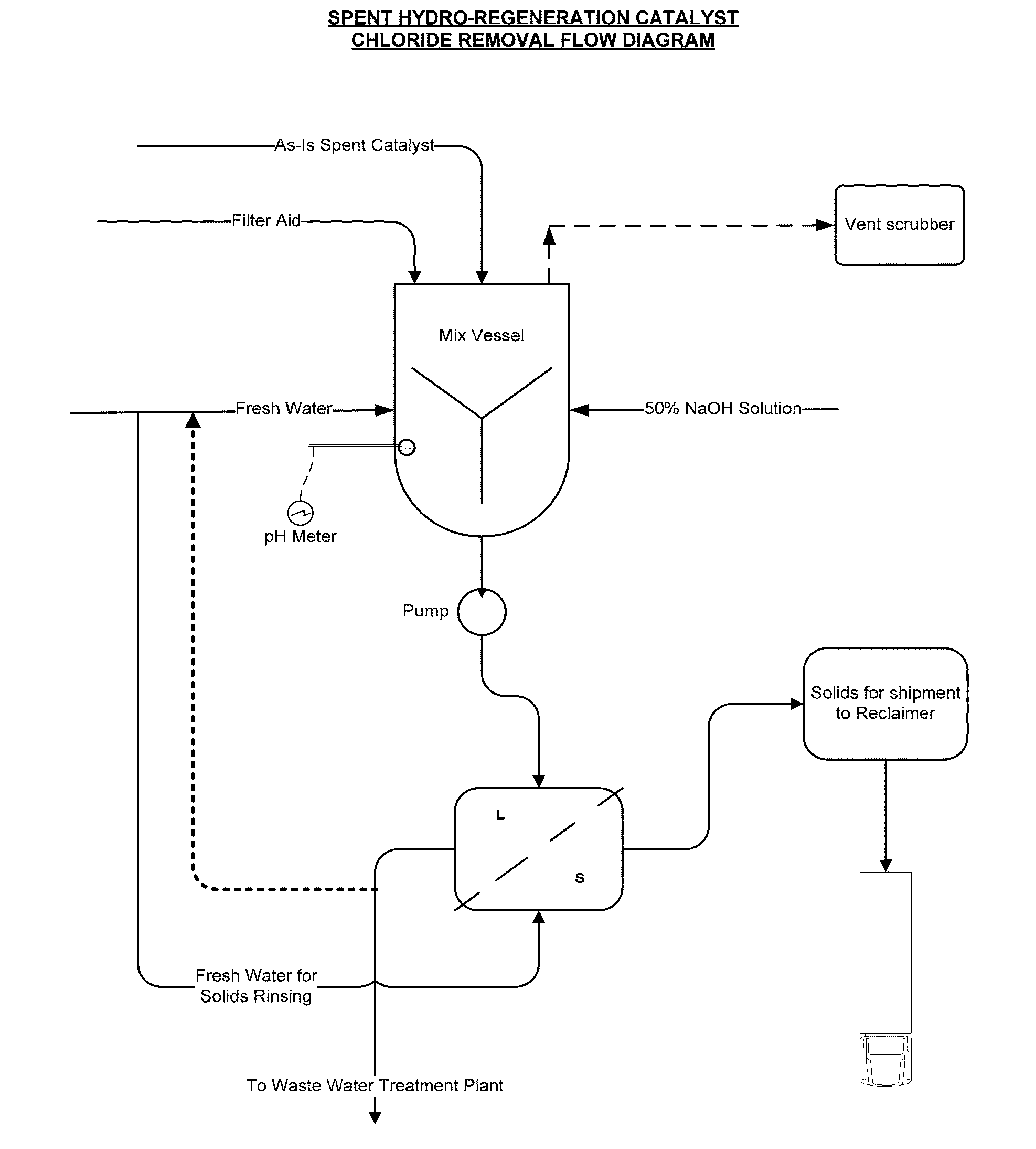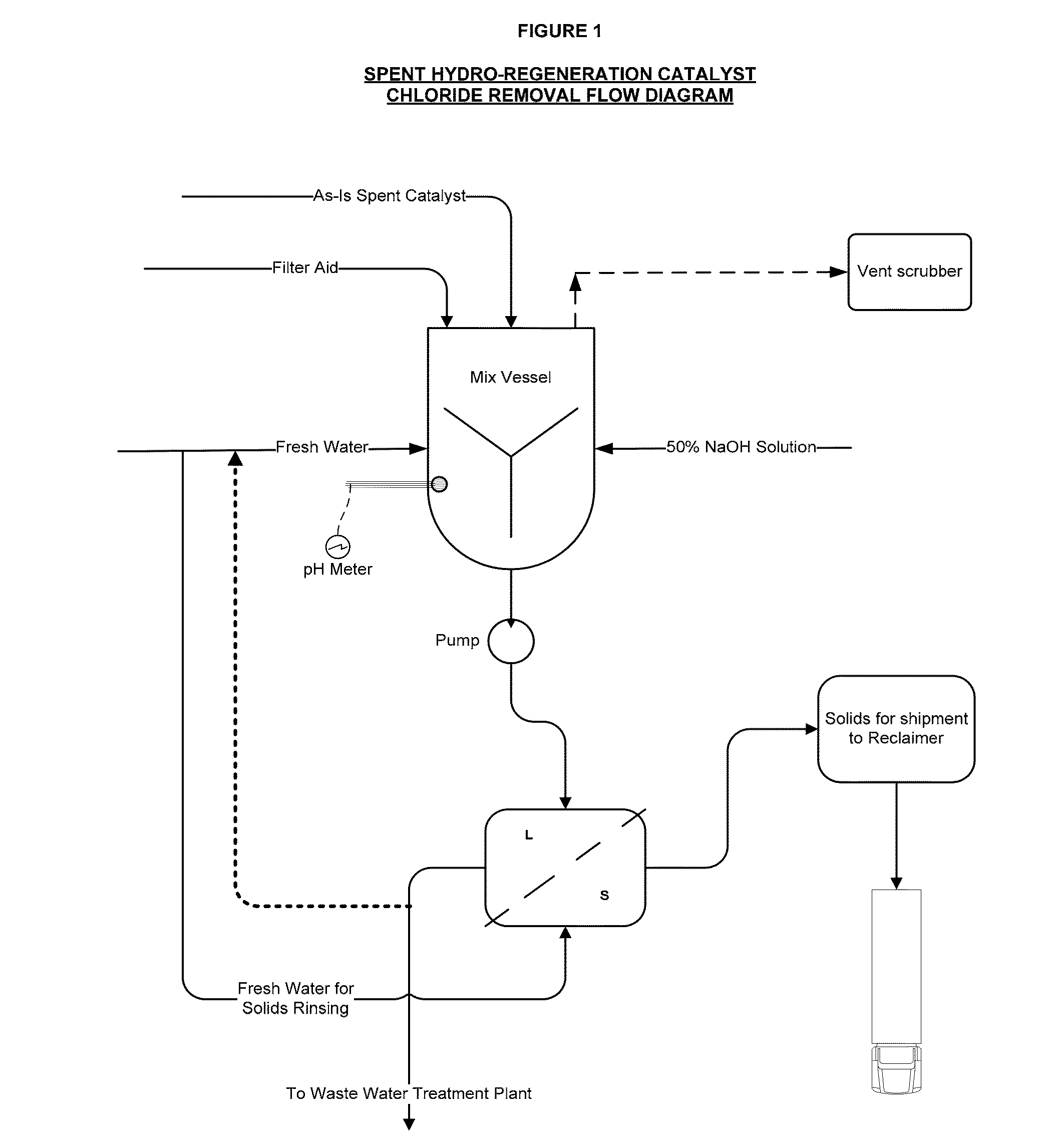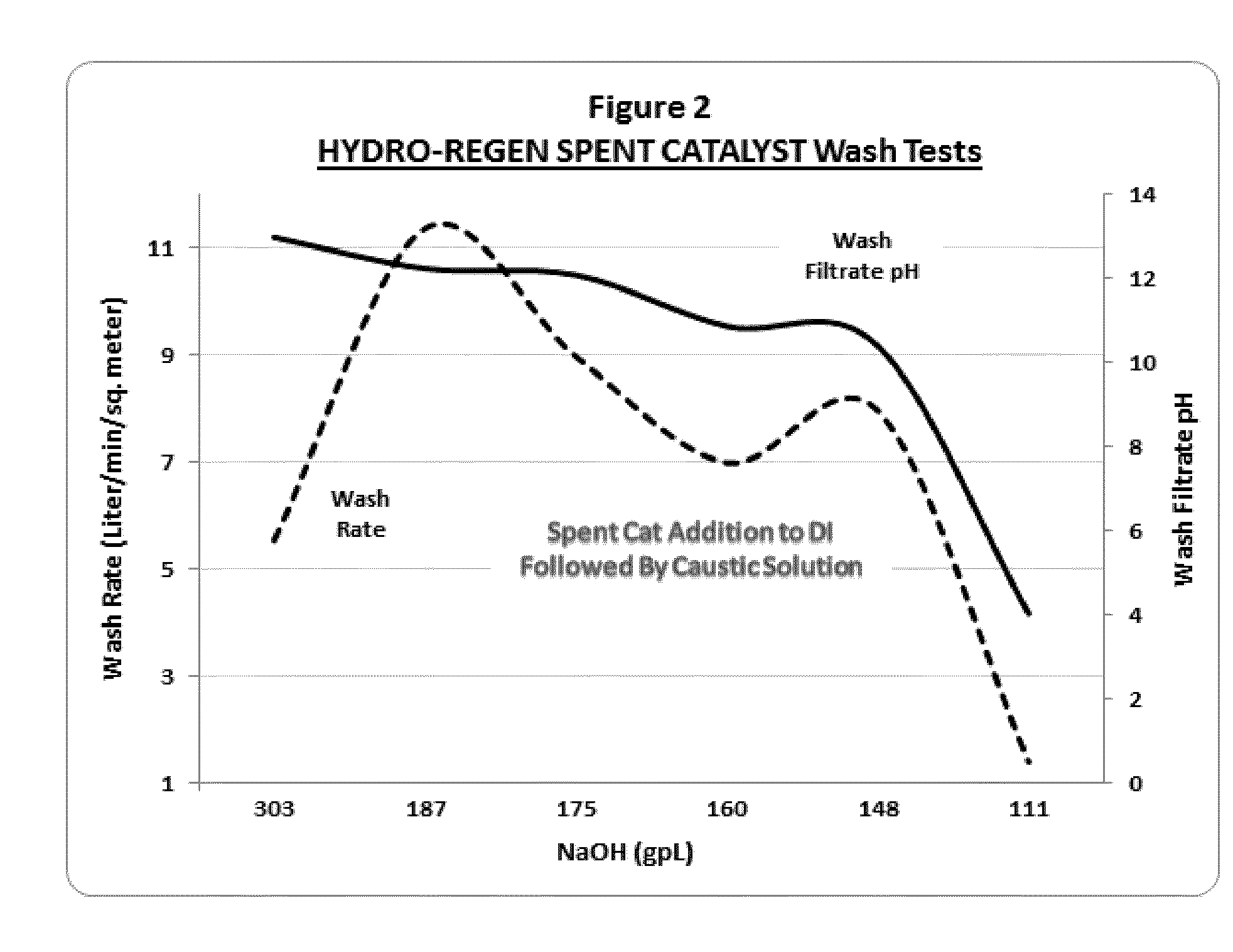Process for preparing a spent catalyst for precious metals recovery
a precious metals and catalyst technology, applied in the direction of metal/metal-oxide/metal-hydroxide catalyst, liquid gas reaction process, etc., can solve the problem that the traditional method of preparing spent noble metal fixed-bed catalysts is not optimized for those spent noble metal fixed-bed catalysts
- Summary
- Abstract
- Description
- Claims
- Application Information
AI Technical Summary
Benefits of technology
Problems solved by technology
Method used
Image
Examples
example 1
Production of Spent Hydro-Regeneration Catalyst
[0075]Various ionic liquid catalysts made of metal halides, such as AlCl3, AlBr3, GaCl3, GaBr3, InCl3, and InBr3 could be used for catalytic processes. N-butylpyridinium chloroaluminate (C5H5NC4H9Al2Cl7) was the ionic liquid catalyst used in our process. Per Table 1, the ionic liquid catalyst has the following composition:
TABLE 1Composition of Ionic Liquid CatalystElementWt %Al12.4Cl56.5C24.6H3.2N3.3
[0076]Refinery isobutane contain 85 wt % isobutane and 15 wt % n-butane was used for this study. A refinery olefin stream containing C3 and C4 olefins from a Fluid Catalytic Cracking Unit (FCC unit) was dried with 13× molecular sieve and isomerized with a Pd / Al2O3 catalyst at 150° F. and 250 psig in the presence of hydrogen to produce isomerized C3 and C4 olefin feed with the composition shown in Table 2.
TABLE 2Composition of Isomerized C3 and C4 Olefin FeedCompositionMole %Propane, C313.3Propylene, C3=25.41-Butene, 1-C4=2.32-Butene, 2-C4=16...
example 2
Comparative Process Using Spent Catalyst Addition to Deionized Water
[0086]Spent 1 / 16″ diameter catalyst pellets, comprising Pt and Pd on an alumina support, were collected from the hydro-regeneration reactor (described above) used to regenerate acidic chloroaluminate ionic liquid catalyst that was in turn used for olefin and isoparaffin alkylation to make alkylate gasoline blending component.
[0087]On contact with air, the spent catalyst pellets released hydrochloric acid fumes. The spent catalyst pellets were added to deionized water and significant exotherms from 50 to 75° C. above ambient temperature were released and an acidic slurry with a pH of less than 3 was formed. It is theorized that the presence of residual chloroaluminate ionic liquid catalyst caused rapid hydrolysis in water to aluminum hydroxide, along with the release of exotherms.
[0088]The acidic slurry was agitated, allowed to settle, and vacuum filtrated using a Buchner funnel to produce a filter cake. The acidic s...
example 3
Process Using Spent Catalyst Addition to Deionized Water Followed by Caustic Treatment
[0093]The spent hydro-regeneration catalyst pellets described in Example 1 were added to deionized water at a concentration of 33 wt % solids in water and tumbled on a roller unit for 20 minutes. As in Example 2, significant exotherms from 50 to 70° C. above ambient temperature were released and an acidic spent catalyst slurry with a pH of less than 3 was formed. To the spent catalyst slurry a caustic solution of NaOH was added to 20-weight percent solids.
[0094]In a series of experiments, the NaOH dosage added to the spent catalyst slurry was varied from 303 gm / L to 111 gm / L. After the addition of the caustic solutions, the spent catalyst slurries were gently tumbled for an additional 10 minutes, followed by solids settling and vacuum filtration (3 psia) through a 9 cm. Buchner funnel with 8 micron pore Whatman paper.
[0095]In these experiments, aluminum hydroxide colloidal gels formed only when the...
PUM
| Property | Measurement | Unit |
|---|---|---|
| wt % | aaaaa | aaaaa |
| thickness | aaaaa | aaaaa |
| diameter | aaaaa | aaaaa |
Abstract
Description
Claims
Application Information
 Login to View More
Login to View More - R&D
- Intellectual Property
- Life Sciences
- Materials
- Tech Scout
- Unparalleled Data Quality
- Higher Quality Content
- 60% Fewer Hallucinations
Browse by: Latest US Patents, China's latest patents, Technical Efficacy Thesaurus, Application Domain, Technology Topic, Popular Technical Reports.
© 2025 PatSnap. All rights reserved.Legal|Privacy policy|Modern Slavery Act Transparency Statement|Sitemap|About US| Contact US: help@patsnap.com



